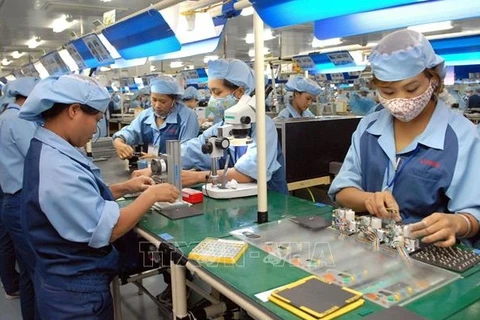 In the first nine months of 2023, Vietnam's export structure to Northeast Asia covers processing-manufacturing goods, construction materials, fuel, minerals, and agro-forestry-fishery products. (Illustrative image - Source: VNA)
In the first nine months of 2023, Vietnam's export structure to Northeast Asia covers processing-manufacturing goods, construction materials, fuel, minerals, and agro-forestry-fishery products. (Illustrative image - Source: VNA) As heard at the event that gave information on demand, trends, and regulations in the East Asian farm produce market, Northeast Asia boasts significant purchasing power and immense potential for economic and commercial development. In addition to the three major trading partners – China, Japan, and the Republic of Korea (RoK), other important markets of Vietnam in this region include Taiwan (China), Mongolia, and Hong Kong (China).
Nguyen Nhu Tiep, Director of the Ministry of Agriculture and Rural Development (MARD)’s Agro-Forestry-Fisheries Quality Assurance Department, acknowledged that East Asia is a market of both traditional and strategic significance to Vietnam, with East Asia standing out as a large export market of the nation, trailing only behind the EU and the US.
According to Nguyen Duy Kien from the Asia-Africa Market Department under the Ministry of Industry and Trade, Vietnam's total import-export turnover with the Northeast Asia market reached 350.2 billion USD last year, accounting for 48% of its total global trade. In the first nine months of 2023 alone, the figures were 236 billion USD and 47.5%, respectively.
Also during the January - September period, Vietnam's export structure to the region covered processing-manufacturing goods, construction materials, fuel, minerals, and agro-forestry-fishery products.
Addressing challenges faced by Vietnamese exports to the area, Kien underscored an increase in transportation costs, currency policies, tightening expenditures, and new import standards imposed by China, the RoK, and Japan.
In response, he advised localities and businesses adapt to new consumer trends and standards in the export markets, maintain market share by maximising the benefits of reduced tariffs brought about by free trade agreements (FTA), step up trade promotion, push products into large distribution systems, and capitalise on cross-border e-commerce./.
VNA























